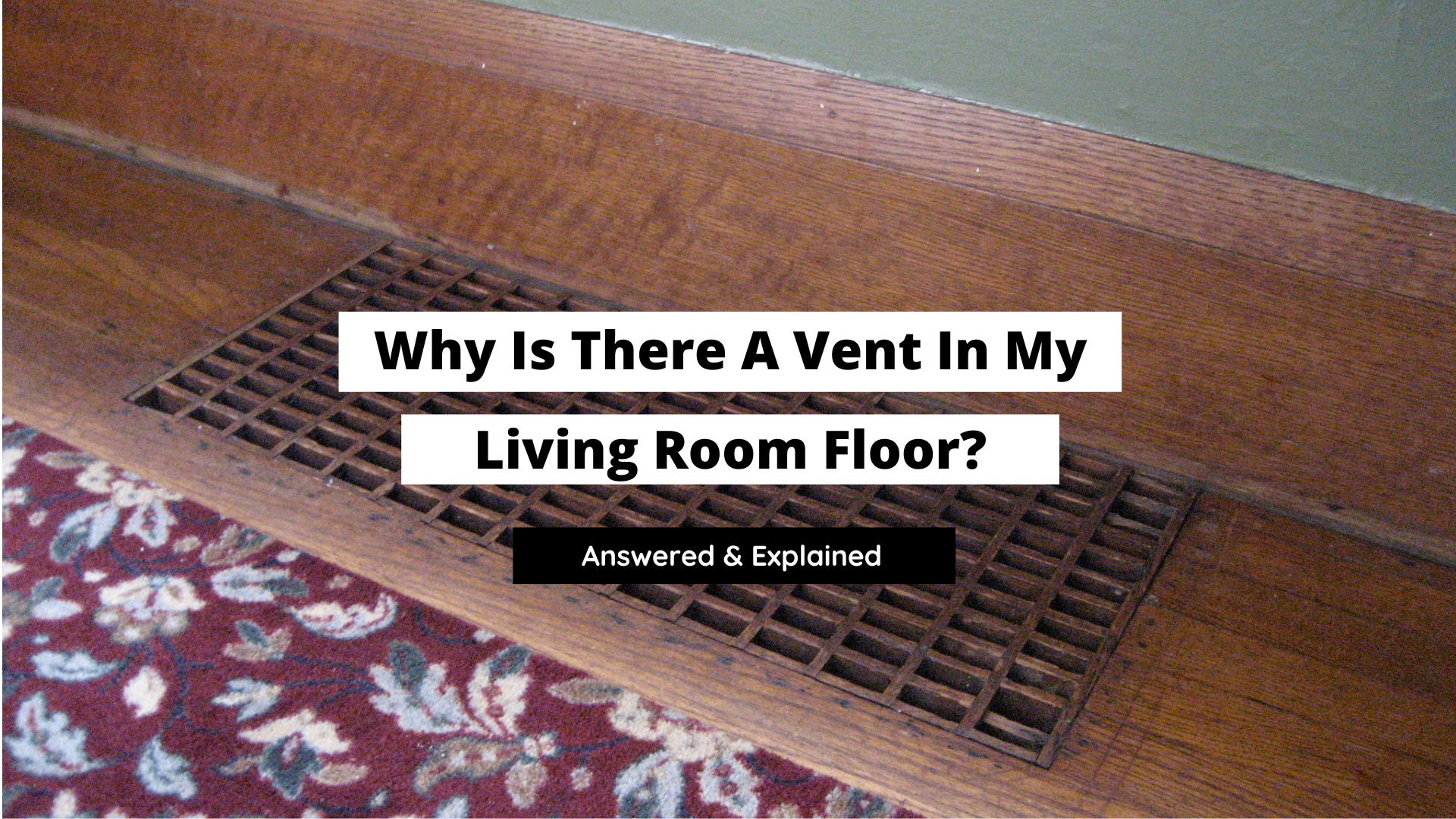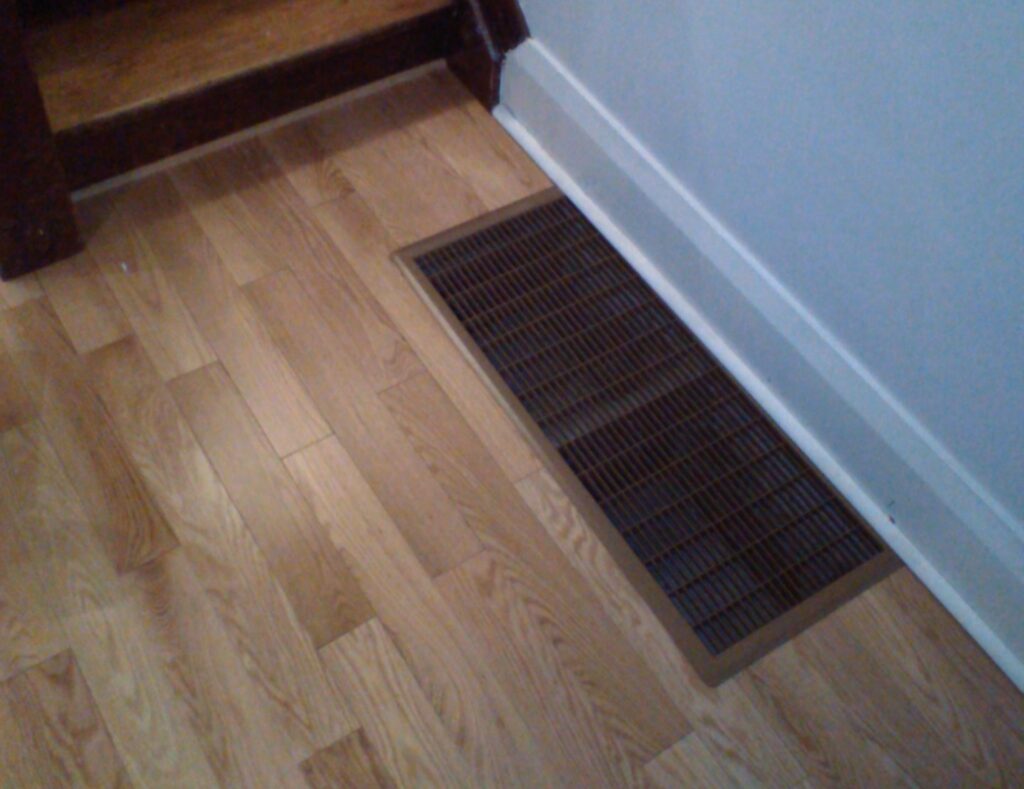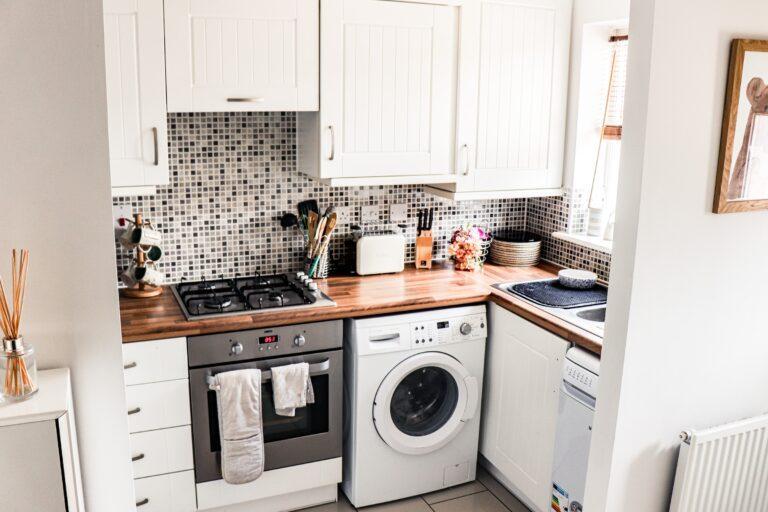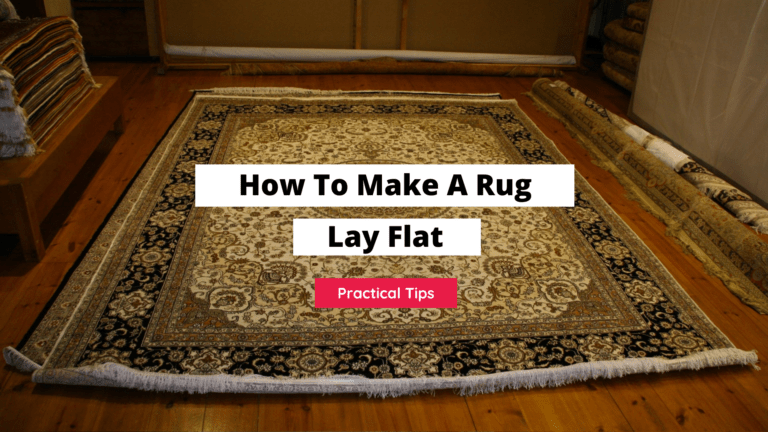Why Is There A Vent In My Living Room Floor? (Answered)

Normally, most air vents are located in the ceiling or on the very upper corner of walls. I can just imagine your surprise when you spot a vent in your living room floor. This begs the question, why is there a vent in my living room floor? Here’s why.
Floor vents provide a host of advantages that improve the temperature and airflow in and out of a room. It is a known fact that most HVAC systems operate at their best when vents are located nearer to the furnace. If the furnace in your home is found in the basement or below floor level, then, the use of floor vents is a strategic decision to improve the performance of your HVAC.
From what I’ve observed and through my own research, I’ve come to learn that it is common for air vents to be located in the floor when the primary concern in the home is heat.
To improve the heat levels in a home, professionals may decide to install floor vents because warm air travels upwards. In this way, you can quickly and efficiently increase the warmness in your home via the HVAC system.
At the same time, it should be noted that cold air tends to travel downwards faster. There are a few more benefits to floor vents that I’d like to share with you in the hopes of convincing you to hold off on removing or blocking them.
Table of Contents
Benefits Of Floor Vents

1. Improves air circulation
When you have access to airflow from different levels in a room, circulation will improve drastically.
In general, architects tend to design a living room to be one of the biggest or most spacious rooms in a home.
But, the bigger a room, the likelier it is to experience humidity if air remains stagnant.
This is one of the reasons why there is a vent in your living room floor.
Given that you also have windows or doors in your living room, it’s a lot easier to cool down and dehumidify a living room with floor vents that pull out and push up the air in conjunction with the ceiling or wall vents.
2. Reduces bad odors
In any home, most of the odors that linger for a while stem from food or liquid that has been spilled on the floor.
This is a common problem when you have young children.
Naturally, it makes sense that most odors begin on your floors rather than on walls or on the ceiling.
Since your living room floor has air vents, that odor is going to be minimized or removed relatively quickly since you have improved the air floor from the floor.
A lot of that odor is going to be pulled out of the air vents of your home ventilation system and replaced with cooler or warmer clean air, especially if you utilize a filter that cleans and purifies the air.
3. Warm or cool the living room quickly
As I mentioned earlier, if your furnace is located below the floor or in the basement, the air in the floor vents has a shorter distance to travel between the furnace and the room.
Warm air tends to rise whereas cool air tends to fall faster.
So, if you’re trying to heat up a room, the floor vents should be able to push warm air from the HVAC system or furnace faster than if it were located on your ceiling.
Alternatively, if you’re trying to cool down the room, hot or humid air can quickly be pulled in by the floor vents while cool air is pushed into the room.
In both cases, you can adjust the temperature of your room more efficiently.
4. It’s easier to clean
What usually results in clogged or dirty air filters is a lack of maintenance and cleaning.
It’s not our fault, though.
Having to climb up and clean air vents in the ceiling or walls is a nuisance.
It’s annoying and time-consuming.
Floor vents, for practical reasons, are easier to clean. They are accessible and usually consist of a removable vent cover that can be detached for quick and easy cleaning.
This will prevent the formation of mold from forming or dust from polluting and clogging your air filters.
5. It warms your floors
Because floor vents tend to be primarily used for heating, what you’ll find is that they not only add warm air to the room but also warm your floors.
This is simply because of the location of the vents which is what makes it such a great idea for homes that are situated in a location that is usually prone to extremely cold weather.
Types Of Floor Vent Covers
One of the cool things about floor vents is that you actually have a few options for covers to match your flooring and room decor.
But, what you want to keep in mind is that a lot of hot air may pass through your floor vents. Using floor vent covers made of cheap materials may erode or melt because of this.
In doing so, it may end up contributing to toxins in your air which is why you want to select the right quality and type of air vent covers for your floor vents.
1. Hardwood floor vent covers
If you have opted for wood flooring in your home, it only makes sense to pair them with wooden floor vent covers.
Hardwood is extremely strong and is known to be quite aesthetically pleasing, especially if you opt for bamboo, maple, cherry, mahogany, or oak.
These are easily removable and can be cleaned without any problem. Also, most hardwood floor vent covers are treated to make them more resistant to damage.
2. Metal floor vent covers
Perhaps the most durable and long-lasting, metal floor vent covers are an excellent choice for avoiding any damage from heat or any other factors.
They are incredibly strong and come in a selection of different metals like aluminum, copper, iron, and so forth.
The only downside is that they are slightly more expensive than other types of floor vent covers but they do last longer than the rest.
3. Baseboard floor vent covers
This type of floor vent cover is designed for aesthetic reasons.
They come in a variety of colors, shapes, and materials to match your baseboards.
In some scenarios, they can add a unique detail to your floor decor.
4. Plastic floor vent covers
This is probably my least favorite of the list because it is prone to damage over time.
But, at the same time, plastic floor vent covers are incredibly cost-effective and easy to remove making them quite practical for cleaning and installation.
To ensure that your plastic floor vent cover doesn’t melt or experience damage from high levels of heat, opt for hard-treated plastic.
Why You Shouldn’t Cover Floor Vents
As much as it is possible to cover floor vents without causing any serious issues to your home’s HVAC, it still isn’t advisable.
Here’s a list of reasons why you shouldn’t cover floor vents.
- It decreases airflow.
- Increases heat or humidity.
- Causes a buildup of pressure in your ventilation system.
- It can lead to the development of mold.
- It can create a buildup of dust in your air ducts.
Chances are such that the living room floor vents were installed with a distinct purpose in mind.
Covering them up may be counterproductive and result in stale air and temperature issues in the future.
Rather than choosing to cover the floor vents, why don’t you opt for changing the floor vent covers to something more suitable and attractive for your living room?
Final Thoughts
Finding vents in your living room floor may be quite a surprise at first but I can assure you that they are not as uncommon as you think.
They can be incredibly useful in cold weather and aesthetically pleasing if you opt for floor vent covers that match your decor and flooring.
With that being said, I hope you found this article on why there is a vent in your living room floor to be insightful and educational. If so, I highly recommend that you check out the following articles as well:
1. Why is my room hotter than outside?





